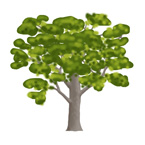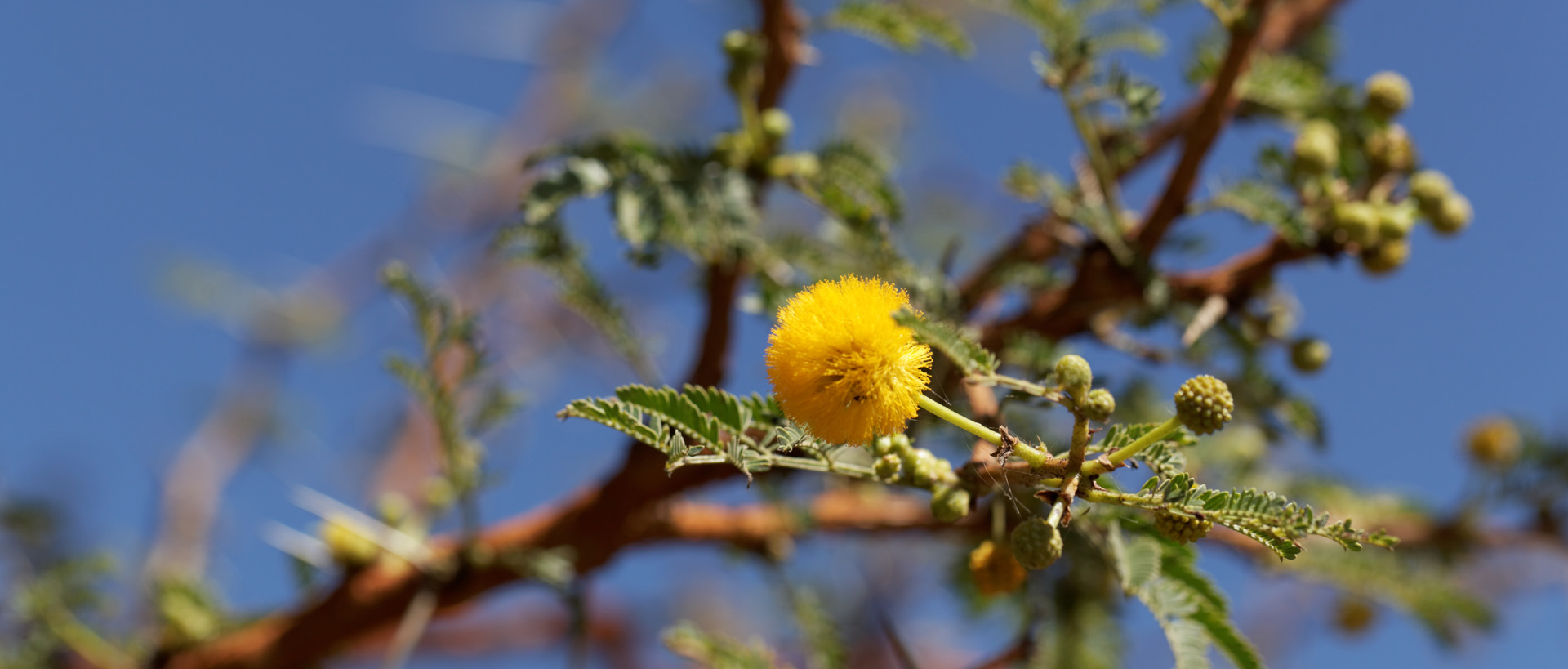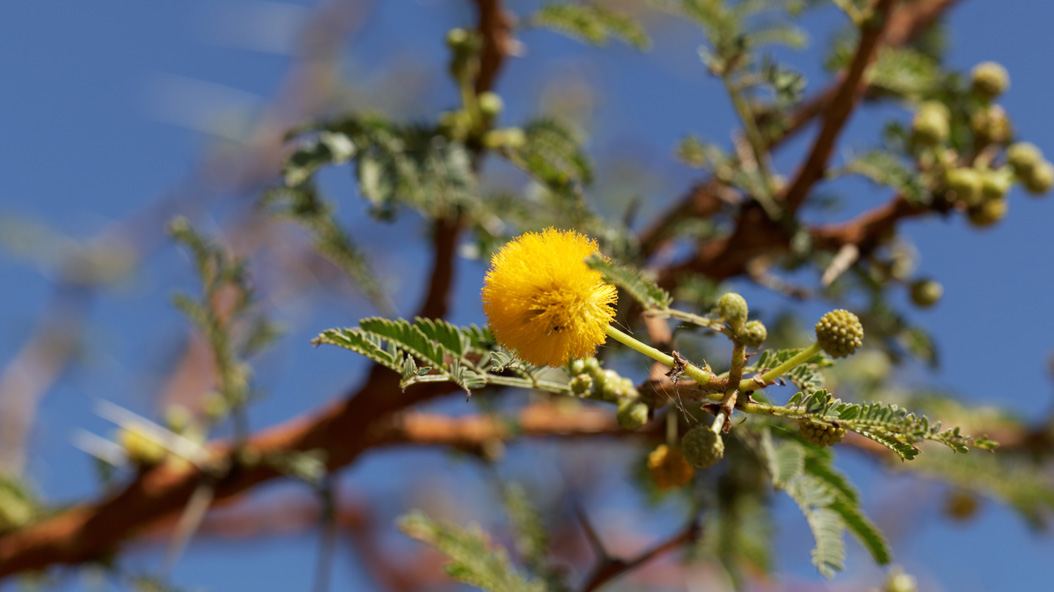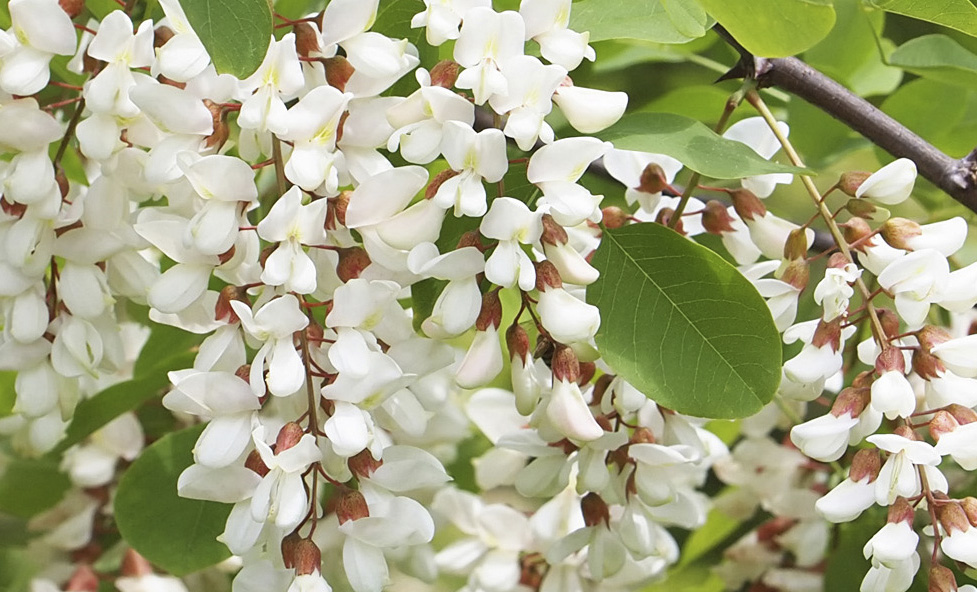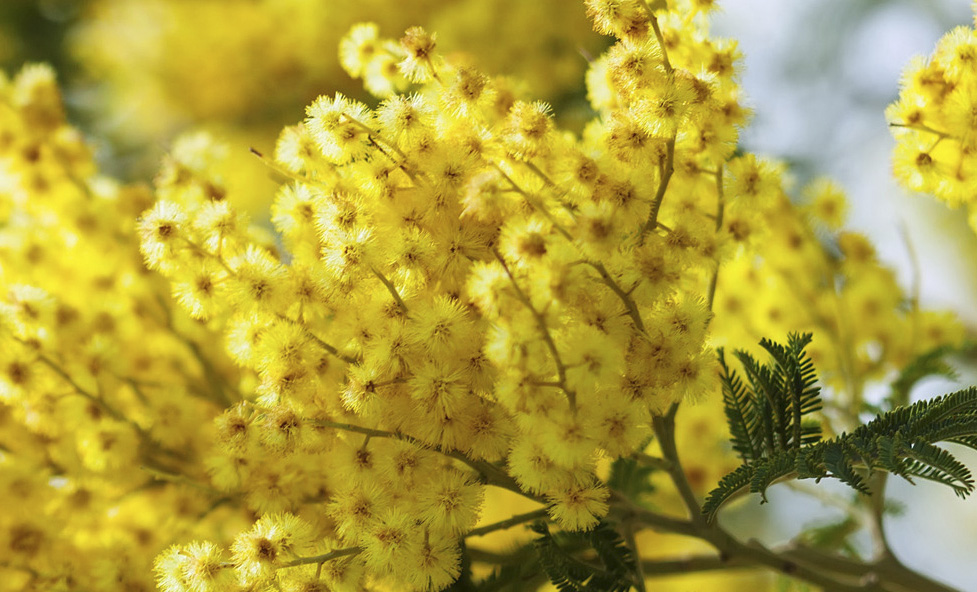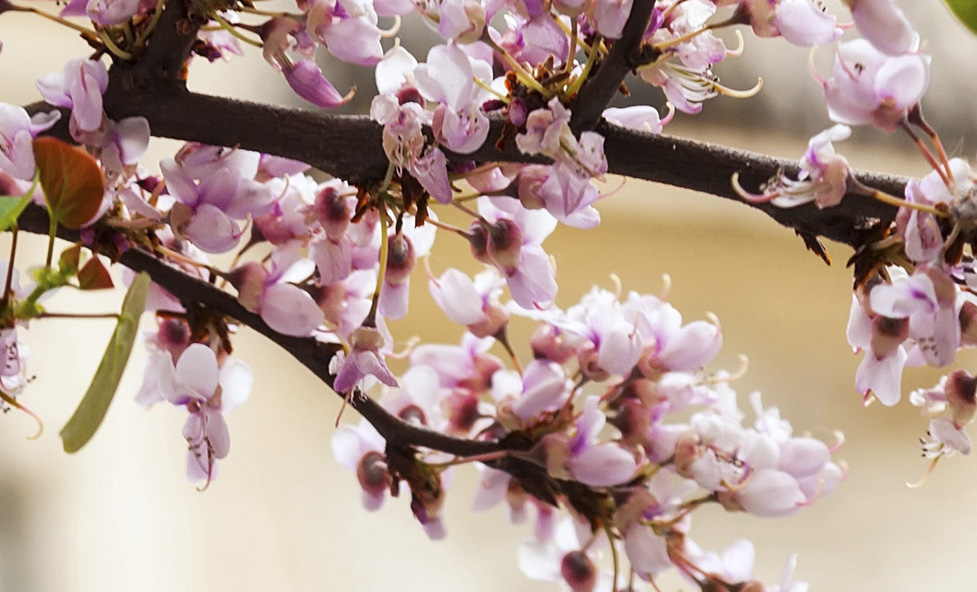Red Acacia
Thorny tree from 6-10m (up to 17) in height and a trunk with a 60cm diameter that is straight and cylindrical with a spreading and open crown. Bark. Smooth and green, often with a fine covering of yellow and reddish powdery lichens. On older trees it is somewhat flaky, with rectangular shaped brown to black flakes. Fibrous bright yellow part with white coloured spots. Foliage. Greenish and powdery red. Thorns. Straight and paired at the base of the leaves, up to 8cm long, a light grey colour. Leaves. Alternate, bipinnate, from 3-10cm long, with 3-7 pairs of pinnae and from 10-20 pairs of leaflets per pinna. Leaflet is glabrous, oblong and elliptical, 3-8mm long and 1-2 wide. Petioles. They often have a gland before the first pair of pinnae and another at the base of the last 1-2, measuring 1.5-9cm long. Inflorescence. Fascicule located at the base of the leaves and composed of 2-5 bright yellow and pedicellate glomerules with diameters of 1.2-1.5cm. Fruit. Narrow curved pod and constricted between seeds, pubescent turning to glabrous, measuring 7-20cm long and 0.5-0.9cm wide, a reddish brown when mature and with 6-10 seeds. Seed. Brown flattened and round with diameter of 7-9mm. Flowering and fructification. Normally during the second half of the dry season, before foliation.
Natural habit
Species found in Sahel-Saharan and Sudanese Sahel. Lower part of slopes and lowlands in clay and heavy soils or rocky ground. In general it is close to rivers and ponds. It tolerates temporary flooding followed by periodic droughts.
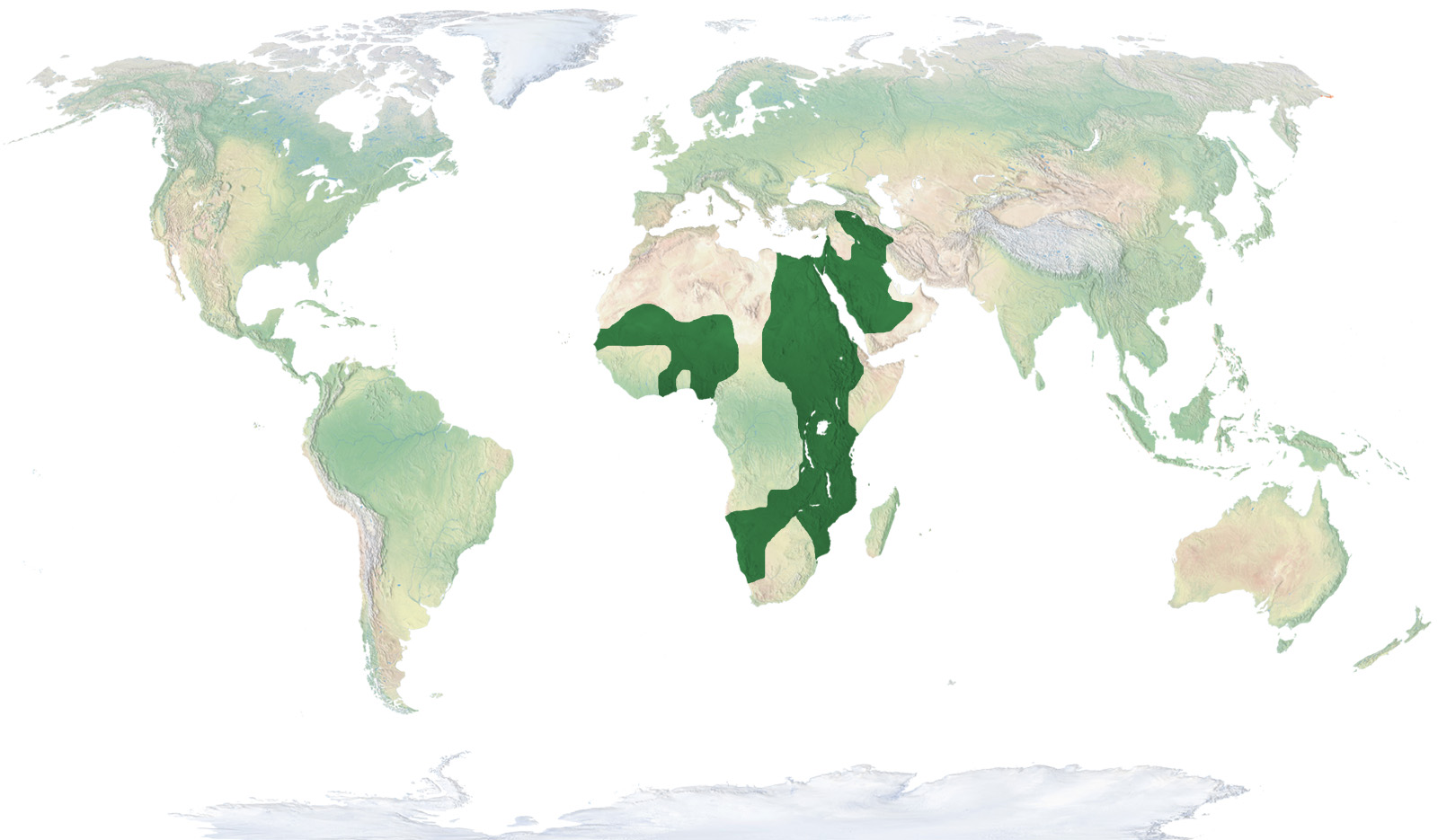
- Natural Habit
Classification
Growth Habit
